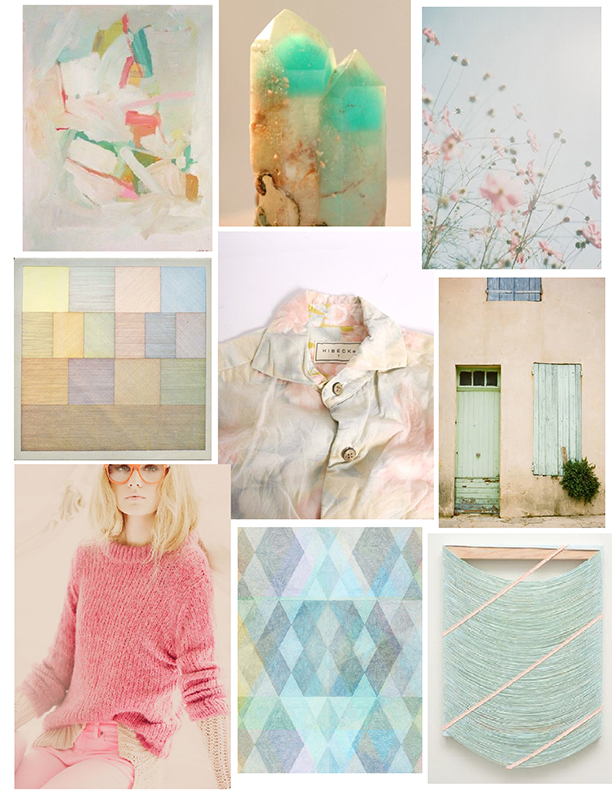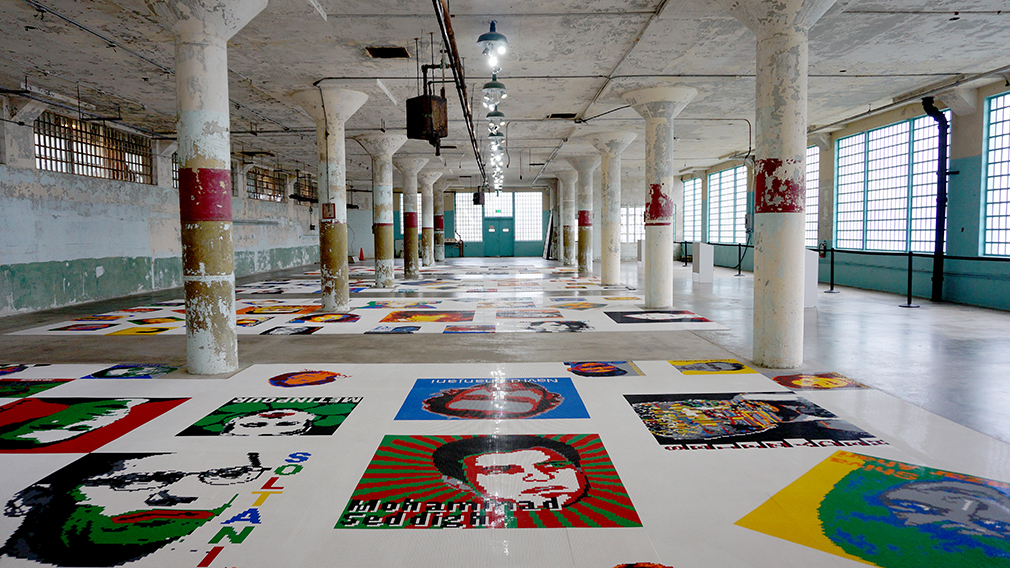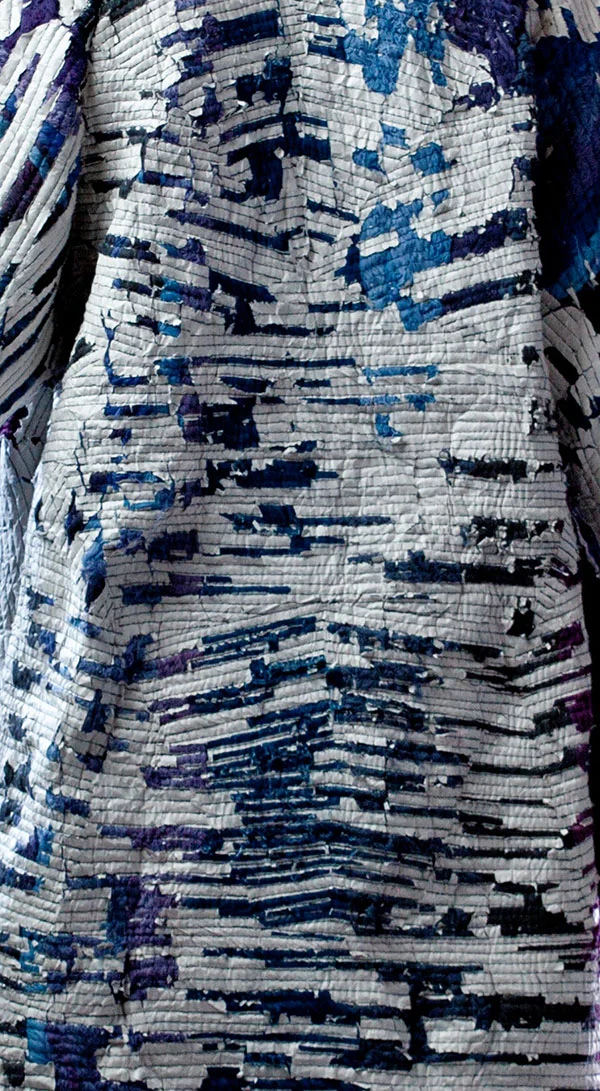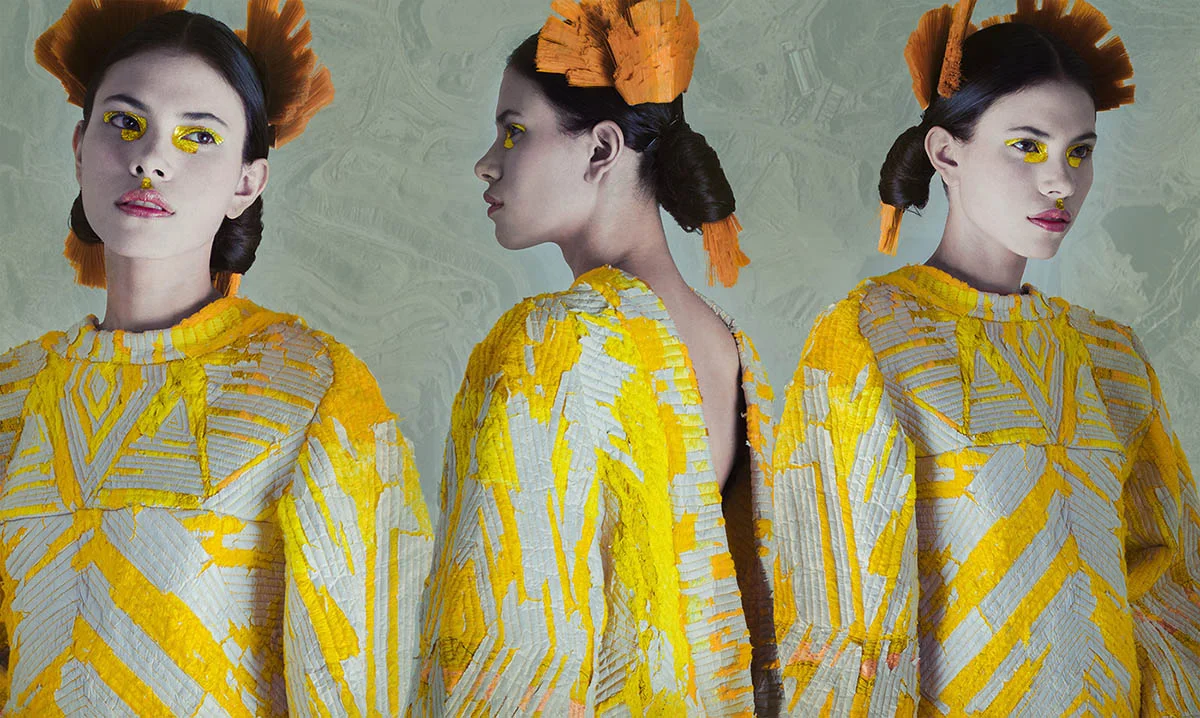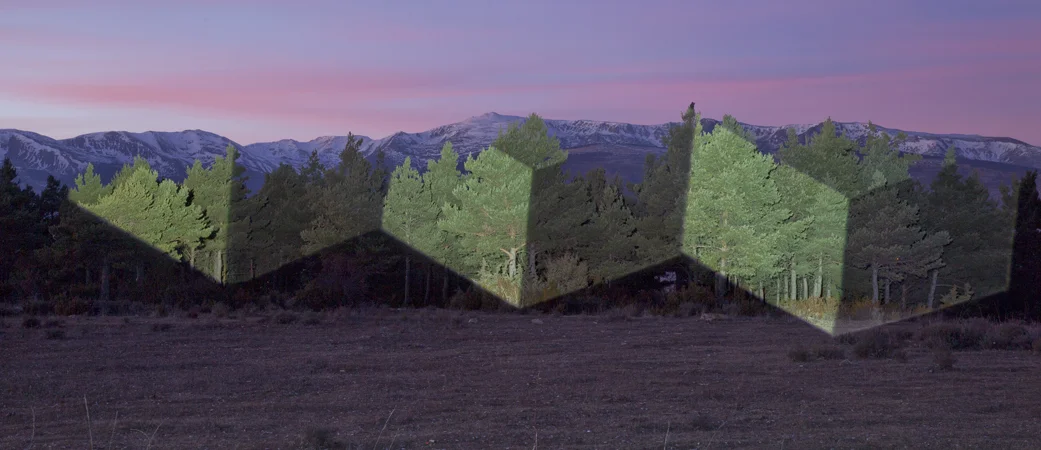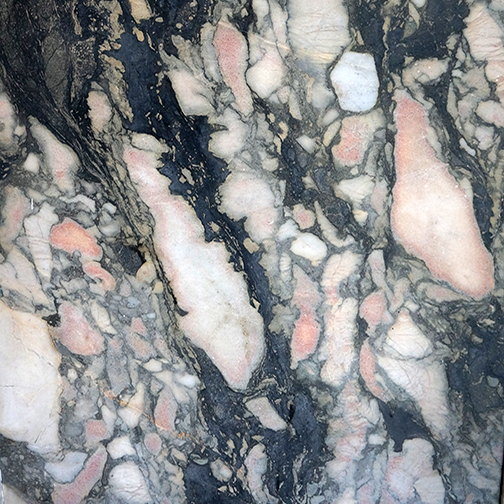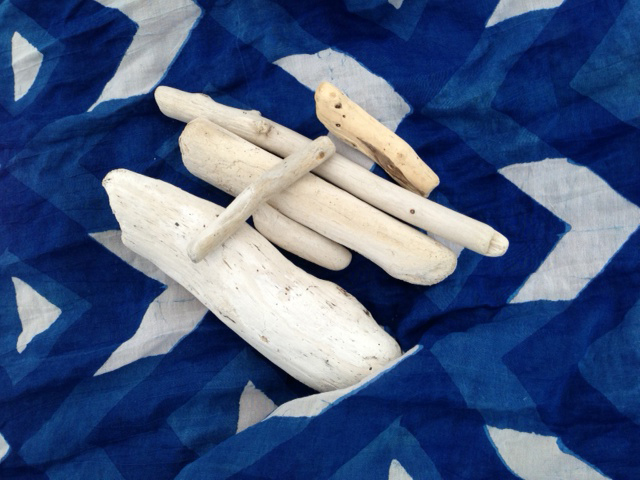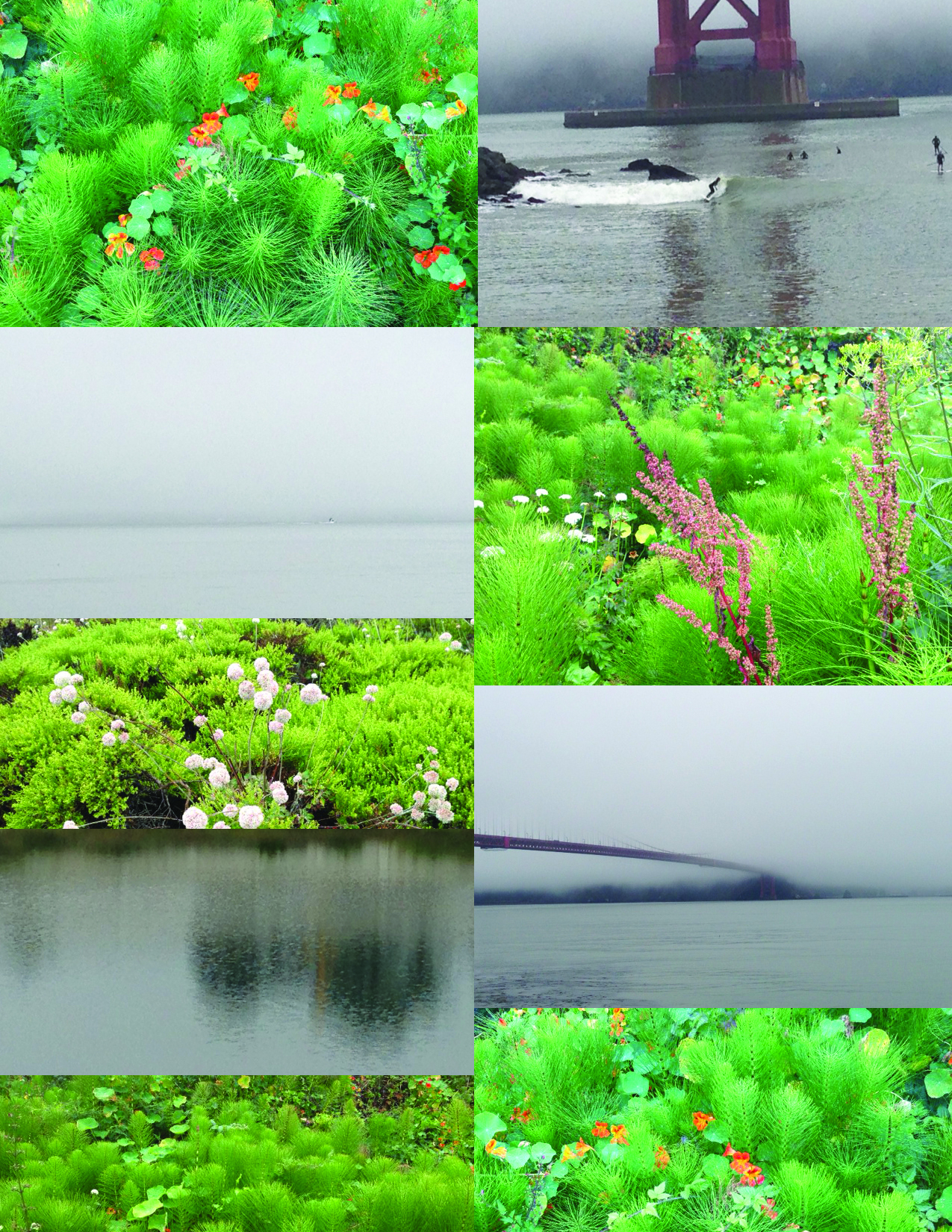It isn't hard to see that I love bright colors. They enliven my soul. But sometimes, I just need to soothe my soul too, and that's where these pastel beauties come in. My Pale Shelter board on Pinterest is a place where I can collect dreamy cotton candy colored hues to my heart's content. I might just go revisit my board and listen to a pretty rad song by the same name.
Ai Wei Wei @ Large on Alcatraz
As stated by the For-Site Foundation (who made this show possible) "Ai says that for him, the dragon represents not imperial authority, but personal freedom: 'everybody has this power.' The individual kites that make up the dragon's body carry quotations from activists who have been imprisoned or exiled, including Nelson Madela, Edward Snowden, and Ai himself." Side note: Take a close look at the eyes of the dragon.
When I'm in between jobs and have time on my hands, I love to take advantage of the free time to explore the city. Most of the time, I travel alone since my friends are at work or home caring for their children. I don't mind seeing exhibits solo because it allows me the space to become involved with the show and sometimes (as was in the case of this particular show) become very emotional. Spoiler alert! If you haven't seen this show and are planning to go, I must warn that I am going to show much of what the exhibit has to offer.
On a whim, I bought an Early Bird ticket to see the Ai Wei Wei exhibit at Alcatraz. I paid a bit more to bypass the general flow of traffic (well worth it) and have a private guide scoot me up to the good stuff before anyone else got there. She told me that it was the first time EVER that she only had one person in her group—lucky me!
So on this blustery and foggy Tuesday morning, my guide and I stepped into the New Industries Building where the exhibit begins with the With Wind installation. Whoa. The light, the blast of color, the contrasting surroundings. Incredible! I felt very privileged to be here before anyone else and also to be in this room alone with these beautiful, hand painted kites. The colors and motifs are chosen from the countries' flags where the prisoners of conscience are being held.
Looking out toward the bay and beyond.
"By confining the kites inside a building once used for prison labor, the artist suggests powerful contradictions between freedom and restriction, creativity and repression, cultural pride and national shame. he also offers a poetic response to the layered nature of Alcatraz as a former penitentiary that is now an important bird habitat and a site of thriving gardens." (quote: from For-Site.org)
Continuing into the next room, we approach the installation called Trace. Laid out on the floor is a vast sea of faces made of individual lego pieces which were hand assembled in squares and pieced together like a quilt. The portraits depict 176 prisoners around the world who have been exiled or incarcerated because of their beliefs or affiliations. Ai Wei Wei calls them “heroes of our time.” It was very moving for me to see these faces and not recognize most of them. I was awed by the sheer number of them, and by the way they were portrayed in this confined space. Literally brought tears to my eyes.
The last exhibit in this building is entitled Refraction. It is a large metal wing weighing several tons, made up of reflective solar panels. The theme of "confined freedom" continues here where "this piece uses imagery of flight to evoke the tension between freedom—be it physical, political, or creative—and confinement. The weight of this piece keeps it earthbound, but one might imagine its array of solar panels silently mustering energy, preparing for takeoff."
The confinement of the guard's walkway where one is forced to view the work through cracked and rusted window panes is noticeable; and the irony of the glowing EXIT sign is not lost on me in this moment.
The next series of works are found in the A block building. The Blossom sculptures are on display in the hospital ward and are made up of an abundant and delicate array of porcelain flowers. "The work could be seen as symbolically offering comfort to the imprisoned, as one would send a bouquet to a hospitalized patient. The profusion of flowers rendered in a cool brittle matieral could also be an ironic reference to China's famous Hundred Flowers Campaign of 1956, a brief period of government tolerance for free expression that was immediately followed by a severe crackdown." (quote: For-Site.org)
The last exhibit that I participated in is called Yours Truly. You are able to correspond directly with any of the listed prisoners by filling out a postcard (they are adorned with foliage and birds from each country of the incarcerated). There is a binder with descriptions of the captives and their stories and you may write any message to any prisoner of your choosing. The staff will mail the pre-addressed cards for you for free. Whether it reaches them or not, will remain unknown although it has been recorded that many do reach them and are greatly appreciated. Around 6 or so prisoners have been released since the beginning of this exhibit.
Here's another excerpt of the description from the For-Site website:
"Ai Wei Wei has spoken of the deep feeling of isolation that afflicts incarcerated people. He says that political prisoners often fear that they — and the causes they fought for — have been forgotten by the outside world. This work is a response to those concerns, reminding detainees that they are remembered — and reminding exhibition visitors of the detainees’ individuality and humanity. In the spirit of free expression, visitors may write any message they wish. Yours Truly brings home ideas at the heart of the exhibition: the responsibilities that we all bear as members of a community, and the importance of communication as both personal expression and a force for social change."
To know more about these as well as a few remaining pieces in the show, I would recommend A) Go to see it in person if you can or B) Read more about it on the For-Site.org website.
It was an incredible show and day all around. I felt all sorts of emotions—from awed and fulfilled, to sad to inspired and hopeful.
January Instagram Fave: Happy Mundane
When you need an extra dose of awesomeness and color, just visit Jonathan Lo's Instagram feed (AKA Happy Mundane). Wowza! To my eyes, his images are just so...well, perfect!
Inspired by: Miguel Mesa
This Colombian designer's work totally caught my eye. Not only is it rich in method, texture and color, but has a powerful background story as well. The collection is called "Potosi" named after the richest silver mine on earth (located in Bolivia). The colorful torn strips of paper running through each piece are meant to recall the destructive paths that are made to the land when mining the silver. He says "In the garments those scars are the ripped paper...I home-dyed over 40 colors of a textile cotton waste and used PET to generate the headpieces."
Hearing the inspiration behind a collection or piece of art always makes it that much more interesting and beautiful to me. Whether it's to make a political statement or just translate a simple idea that comes to mind—on the vast spectrum of inspiration, isn't that what art is no matter the medium? What inspires you?
Quotation, info and images are from a Trendland article written by Anna Canlas May 2014.
I finally have an Instagram account and I can't believe I didn't start this sooner. What the heck was I waiting for!? It's so fun! Since I love to take adventures around the city, and am constantly snapping pics, it's the perfect forum for sharing the gems I find along the way. Join me on my jaunts around the Bay Area and beyond @katjaollendorff and I hope you enjoy!
Wall Art
Courtesy of the city streets...
Pretty Books
I bought these books for $1 each at a library sale. Why? Well because they were just so darn pretty. They are from India, Austria, Japan and Russia—too bad I'll never be able to read them, but they make me happy and sure look good on my shelf!
Geo Projection
Fairytale Youth
I just love going to the public library. With the diminishing number of bookstores in the city, there are fewer places one can sit among books, lolling on a rolling step stool, perusing attractive covers and being inspired by an unfamiliar author or artist.
One such artist I happened upon is Ivan Bilibin. He was an early 20th century illustrator and set designer (did work for the Ballet Russes) who was inspired by Slavic folklore.
I was struck by the folk nature of the illustrations that called to mind my youth and the hours I spent poring over old books of German fairytales. I would beg my mother to let me color in the black line-drawn illustrations of my books. Once, she did (and I think we still have the book). When I saw these colorful Bilibin illustrations, I felt these were exactly what I had envisioned in my child's mind's eye. Although the outcome of my renderings was quite different!
I feel completely transported and satisfied somehow, staring at these amazing illustrations—especially the patterns and elaborately detailed garments of each scene and character. Here are just a few examples.
Ivan Bilibin
Ivan Bilibin
Ivan Bilibine 1930 Dance costume
Down Town
Look all around - up and DOWN
Seeing Triple
I love this trend I'm seeing on Pinterest these days. Kaleidoscopic images!
Photography clockwise from upper left: Pierre Debusschere, Markus Prtizi, Wayne Maser, Sanaa H
Seen on the Street
Crocheted art on a large wall along Grove Street.
Ships and Shapes
When I'm out and about on my walks, my eye generally catches the natural, organic beauty of the Bay. Today however, as I was watching the America's Cup boats racing around the Marina, I began to notice the more geometric, nautical shapes and colors around me.
Press Pause
You know you are obsessed with pattern when you can't help but notice the curtains or wallpaper in the background in a scene on TV. While normal people are watching the characters, I'm peeking around the room on Downton Abbey and noticing the sofa or a collar on Lady Mary's jacket. Sometimes I'm so taken with something I have to pause the show to yes, take a picture of the screen.
Sea Ranch
My friends invited me up to their amazing getaway up the coast in The Sea Ranch this weekend. Spent some time at the tide pools, the beach, the forest—all in the misty fog. Breathed in lots of fresh air and ended each day with great food and a dip in the hot tub. What a way to unwind! It was heavenly!
Collecting driftwood
Sea Ranch findings
Diebenkorn Rules
I spent the afternoon at the de Young Museum, totally enthralled by the Diebenkorn exhibit. He has always been a favorite of mine, and when I walked in and was surrounded by his work I felt a total rush and I think I even cried a little. It was so exciting to see his artwork up close as well as from a distance—so very inspiring and a must see!
I was also really struck by his notes to himself on beginning a painting:
- Attempt what is not certain. Certainty may or may not come later. It may then be a valuable delusion.
- The pretty, initial position, which falls short of completeness, is not to be valued—except as a stimulus for further moves.
- Do search. But in order to find other that what is searched for.
- Use and respond to the initial fresh qualities, but consider them absolutely expendable.
- Don't "discover" a subject—of any kind.
- Somehow don't be bored—but if you must, use it in action. Use its destructive potential.
- Mistakes can't be erased, but they move you from your present position.
- Keep thinking about Pollyanna.
- Tolerate chaos.
- Be careful only in a perverse way.
—Richard Diebenkorn
Untitled (Yellow Collage) 1966 Richard Diebenkorn
Cityscape #1, 1963 Richard Diebenkorn
Tree Silhouettes
Looking at the shapes of things against the sky.
Golden Gate Park
I had such an urge to be in nature for a little inspiration, and I really didn't need to go very far. Just a quick walk around the Chain of Lakes and look at all the beauty I encountered.
Crissy Field
Even on the foggiest, most grey of days, there is lush greenery all around. This is truly summer in San Francisco!
Summer Solstice
Another beautiful day in the Bay Area. These colors made me smile.

